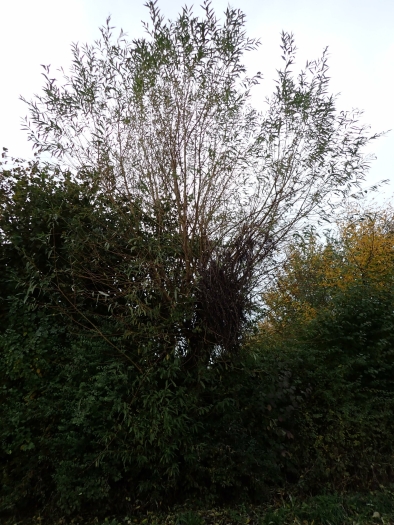Almond Willow
(Salix triandra)
Almond Willow (Salix triandra)
/
/

© Dr. Guido Bohne
CC BY-SA 4.0
Image By:
© Dr. Guido Bohne
Recorded By:
Copyright:
CC BY-SA 4.0
Copyright Notice:
Photo by: © Dr. Guido Bohne | License Type: CC BY-SA 4.0 | License URL: http://creativecommons.org/licenses/by-sa/4.0/ | Uploader: gbohne | Publisher: iNaturalist |




















Estimated Native Range
Summary
Salix triandra, commonly known as Almond Willow or Almond-leaved Willow, is a deciduous shrub or small tree native to riparian zones, wet meadows, and floodplains across Europe and Asia. It typically grows to a height of up to 33 feet (10 meters) and is characterized by its slender branches and elongated, lance-shaped leaves that resemble those of an almond tree. The bark is smooth and gray-brown, becoming fissured with age. In spring, it produces catkins that are yellowish-green, with male and female flowers on separate plants. The flowers are not particularly showy, but they are valuable for pollinators.
Almond Willow is valued for its fast growth and adaptability to wet conditions, making it suitable for erosion control along waterways. It is also used in basketry and as a source of charcoal for artists. In cultivation, it requires consistently moist soil and full sun to part shade. It is relatively low maintenance but can be susceptible to willow anthracnose and other fungal diseases. Regular pruning may be necessary to maintain its shape and promote healthy growth. Due to its potential invasiveness, it should not be planted where it can spread into natural waterways outside its native range.CC BY-SA 4.0
Almond Willow is valued for its fast growth and adaptability to wet conditions, making it suitable for erosion control along waterways. It is also used in basketry and as a source of charcoal for artists. In cultivation, it requires consistently moist soil and full sun to part shade. It is relatively low maintenance but can be susceptible to willow anthracnose and other fungal diseases. Regular pruning may be necessary to maintain its shape and promote healthy growth. Due to its potential invasiveness, it should not be planted where it can spread into natural waterways outside its native range.CC BY-SA 4.0
Plant Description
- Plant Type: Shrub, Tree
- Height: 10-20 feet
- Width: 5-10 feet
- Growth Rate: Rapid
- Flower Color: N/A
- Flowering Season: Spring
- Leaf Retention: Deciduous
Growth Requirements
- Sun: Full Sun, Part Shade
- Water: High
- Drainage: Medium, Slow
Common Uses
Bank Stabilization, Erosion Control, Hedges, Water Garden
Natural Habitat
native to riparian zones, wet meadows, and floodplains across Europe and Asia
Other Names
Common Names: European Black Willow, French Willow, Black Maul
Scientific Names: , Salix triandra, Salix amygdalina, Salix androgyne, Salix androgyne, Salix hastata, Salix triandra, Salix triandra subsp. concolor, Salix triandra subsp. concolor, Salix triandra var. concolor
GBIF Accepted Name: